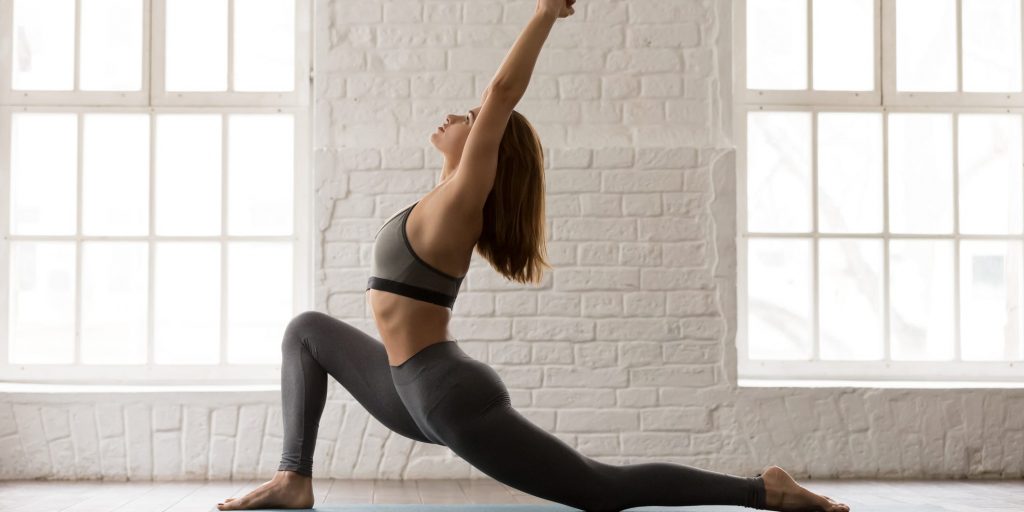When you buy through our links, Insider may earn an affiliate commission. Learn more.
- Some evidence suggests yoga may offer as much relief from lower back pain as physical therapy.
- Yoga poses to try include child's pose, cat-cow pose, low lunge pose, and downward dog pose.
- Ask your doctor about trying yoga for back pain, and always take it slow when first starting out.
Many different practices and styles of yoga exist — some are geared toward meditation and spirituality, while others may focus more on strength and flexibility. No matter which type of yoga you're drawn to, the practice can have many benefits for your health, including helping relieve lower back pain.
In fact, according to one 2017 study, yoga was just as effective at reducing low back pain for participants after 12 weeks as physical therapy. This improvement lasted through follow-up one year later.
Moreover, participants in both groups were about 21% less likely to be using medications to manage their pain after 12 weeks, compared to a third group who received an educational book and newsletters about low back pain, but no other assistance.
Shannon Leggett, a physical therapist and yoga teacher in private practice says yoga can help address all of the different components of low back pain, including:
- Decreased strength or flexibility of muscles in the abdomen, hips, legs, and back.
- Stress and related tension held in muscles. "This tension is different from muscle tightness. It's created by the nervous system. Yoga breathing techniques (pranayama) help calm the nervous system, which can relax muscles," Leggett says.
- "Lifestyle also plays a huge factor — sleep hygiene, diet, mindset. Yoga philosophy provides a nice framework to have conversations about making changes around some of these," Leggett says.
Below, you'll find seven yoga poses that may help relieve low back pain.
1. Child's pose
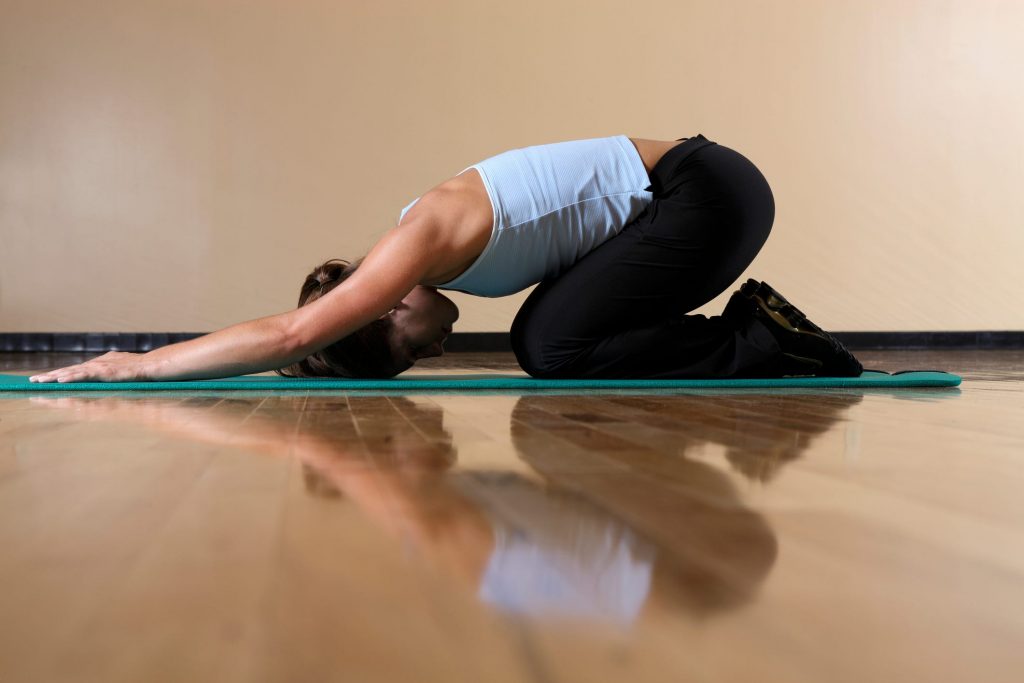
Why it helps: Child's pose opens up the chest, major muscles on your back, hips, quads, and — depending on the position of your body — the tops of your feet.
It's also usually a very relaxing pose, and it can be a great way to practice diaphragmatic breathing, which can have a calming effect on the nervous system, Legget says.
How to do it
1. Kneel down with your toes together — in other words, your two big toes should touch.
2. Spread your knees apart to the width of your hips, and place your palms on the top of your thighs.
3. Exhale and lean forward while extending your arms. Your buttocks should rest on your feet, and your torso should be between your knees.
4. Touch your forehead to the ground, if you can. Your arms should extend straight out, with your palms touching the ground.
2. Cat-cow pose
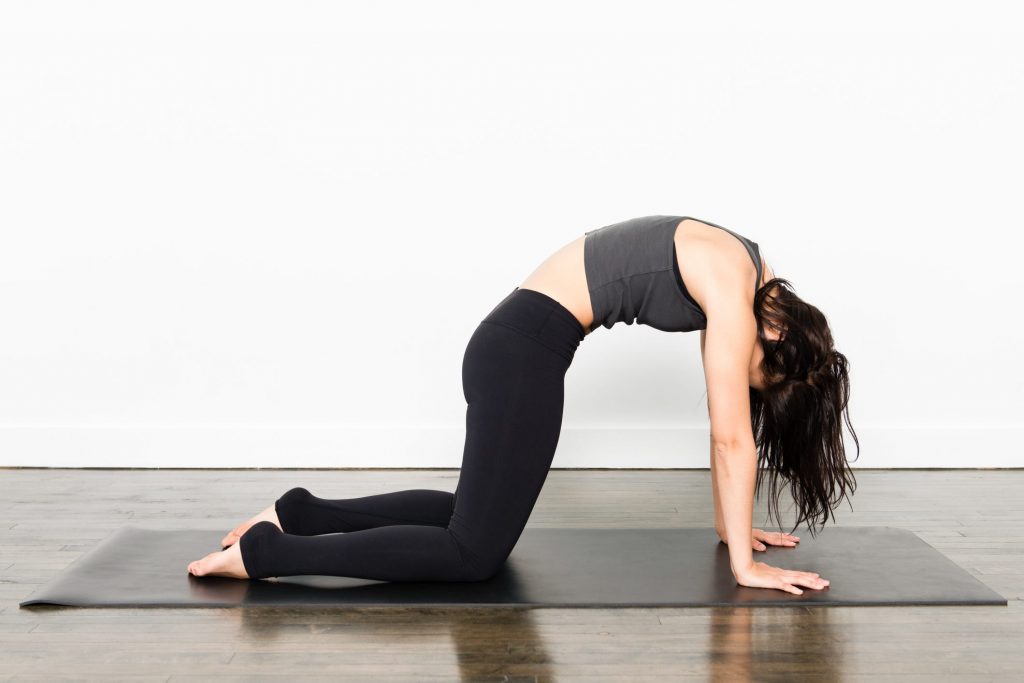
Why it helps: Cat-cow is a pose suitable for beginners that can improve mobility of the entire spine.
Your spine can easily get stiff if you sit often and spend large chunks of your day bent over a phone or computer. This lack of spinal mobility can contribute to low back pain, Leggett says.
How to do it
1. Kneel on the floor or a mat and put your hands down in front of you. Your wrists should be directly under your shoulders, and your knees directly below your hips.
2. Inhale and curve your lower back and pelvis. Bring your head and chest up, and look toward the ceiling — this is the "cow" part of the pose. The extension should come from the middle section of your spine.
3. Then, exhale and bring your abdomen inward, gently rounding your back toward the ceiling and bringing your head and pelvis down like a cat.
4. Inhale and return to cow pose, then exhale and return to cat pose. Repeat several times.
3. Downward dog pose
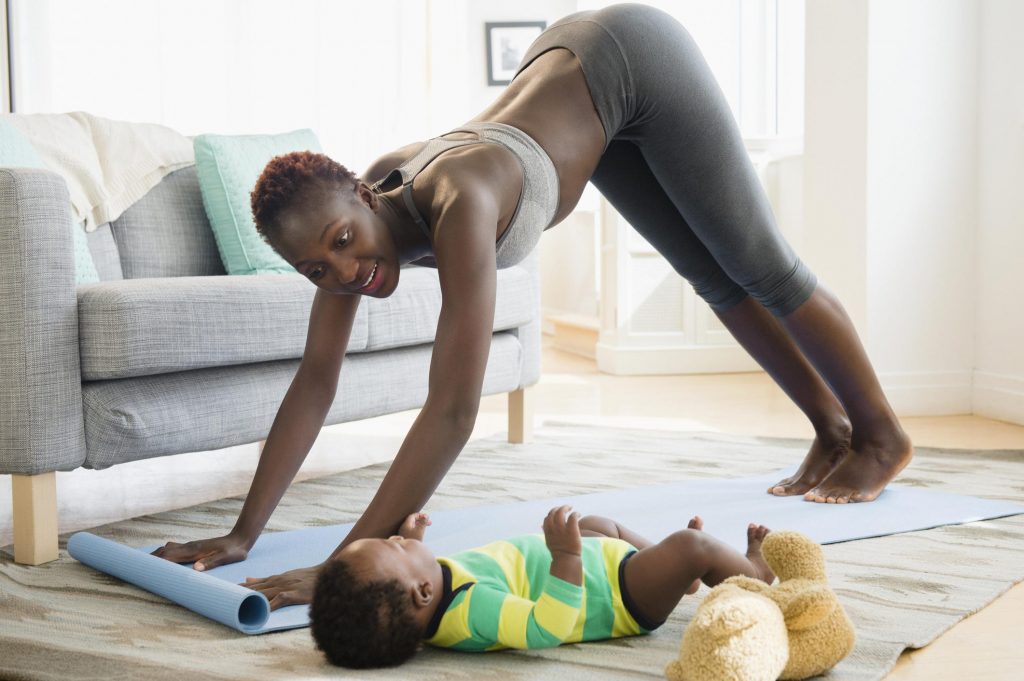
Why it helps: Downward dog pose helps stretch out the back half of your body, which can ease the tension in your glutes and legs that may contribute to low back pain, says Dr. Sandy Baird, a chiropractor and yoga teacher in private practice.
How to do it
1. Start on your hands and knees.
2. Raise your hips upward by extending your knees while keeping your arms straight and your hands braced on the floor.
3. Keep your back straight and your head down, looking at the floor.
4. Low lunge pose
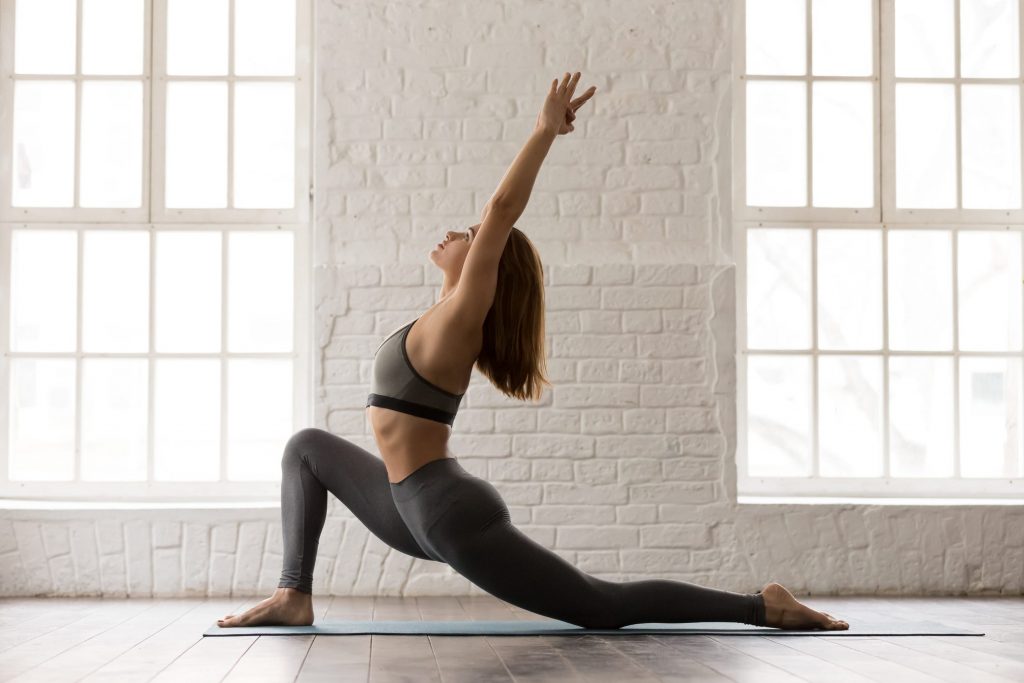
Why it helps: The low lunge pose stretches your psoas muscle — located deep within your low back and pelvis — which Baird says is a common culprit in nagging low back pain.
How to do it
1. Start from the downward dog pose.
2. Bring one foot up to step between your hands.
3. Lower your other leg until your knee and shin touch the floor, and point your toes.
4. Raise your arms upwards, reaching for the ceiling.
5. Bridge pose
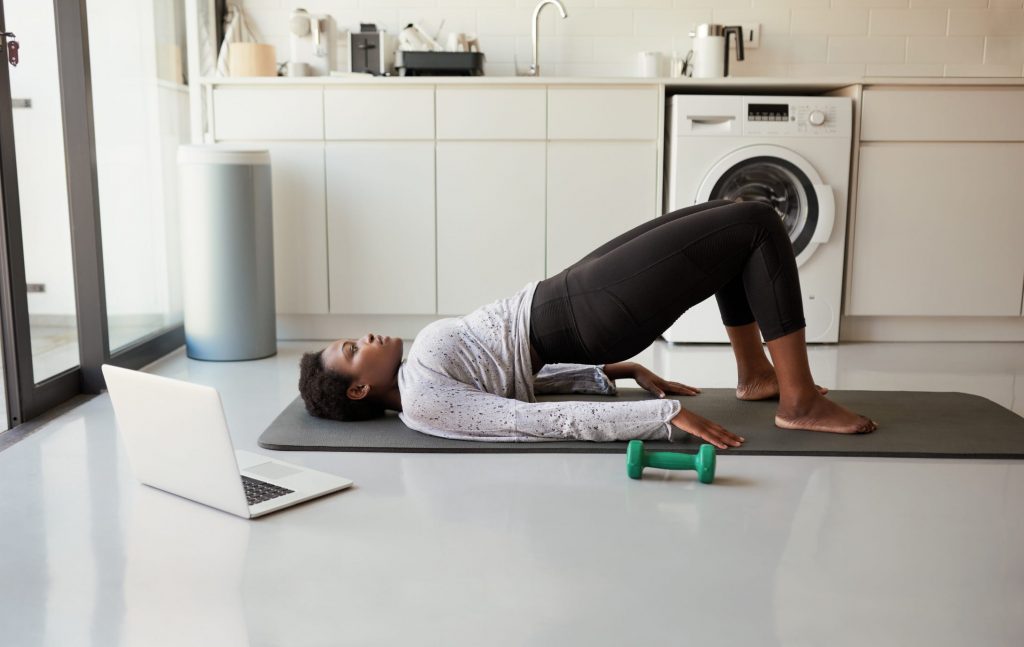
Why it helps: This pose helps strengthen your gluteus maximus muscle. When your glutes fire properly and strongly, you're less likely to use muscles of your low back as compensation for weak glutes, Baird says.
How to do it
1. Lie on your back with arms at your sides, knees bent, and feet flat on the floor.
2. Raise your buttocks off the floor. Keep your knees hip-width apart and your back straight.
6. Sphinx pose
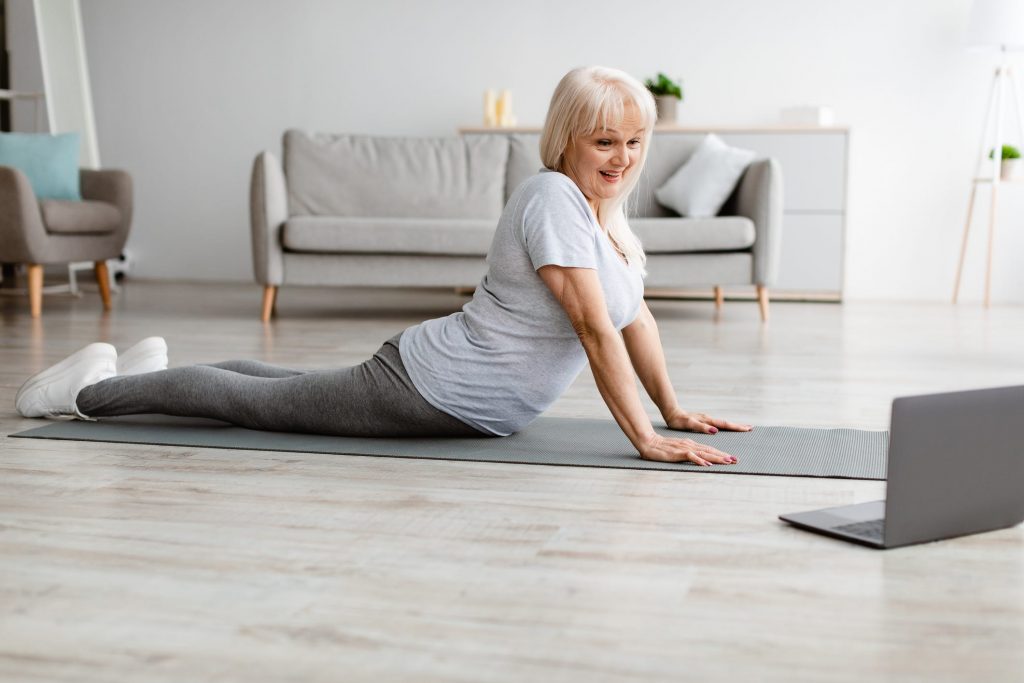
Why it helps: This pose works the spine into gentle extension, a movement often lacking in frequent sitting that leads to low back pain, says Leggett. Sphinx pose also offers a gentle stretch of the abdominal muscles, which can become tight due to excessive sitting.
How to do it
1. Lie on your stomach, with your arms bent so your elbows are lined up with your shoulder blades.
2. Press your knees and feet into the floor, inhale, and raise your upper body by pressing your forearms and hands into the floor while keeping your chest forward. You can also use your elbows to help press into the floor if you need to.
3. Stop when you have a comfortable stretch of your back. Keeping your eyes forward, hold there, and breathe, up to 10 breaths.
7. Janu Sirsasana (Head to knee pose)
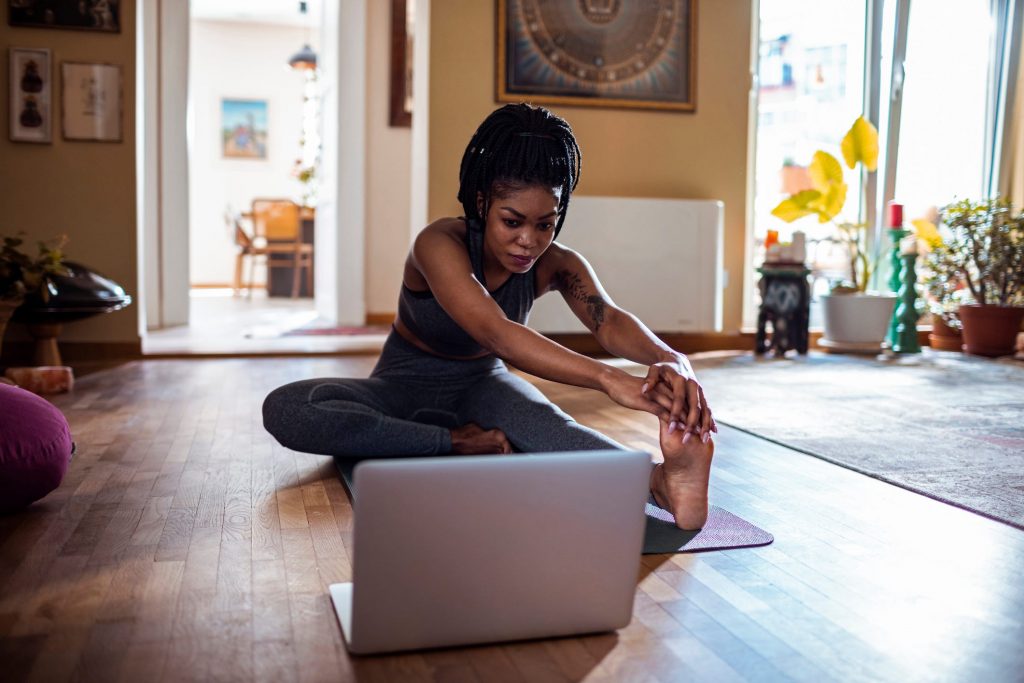
Why it helps: Janu Sirsasana stretches the hamstring and the quadratus lumborum, which is located deep in your low back and runs to the side of your hip. It also helps the ribcage rotate.
Since any one of these areas can contribute to low back pain, this pose is like a three-for-one, Leggett says.
How to do it
1. Start from a sitting position, with your legs straight in front of you.
2. Bend one knee and place that foot against your opposite inner thigh, forming a triangle shape with your bent leg. Then relax your knee.
3. Raise your arms over your head and lower your torso forward over your extended leg.
4. Place your hands on your leg, or your foot if you can stretch that far.
Insider's takeaway
Yoga can be an effective intervention for low back pain. In some cases, it may even provide many of the same benefits as physical therapy.
The poses shown here are suitable for beginners, and you may find them helpful for relieving some of your low back pain. Just remember to take it slowly and stop right away if you feel more discomfort or pain. It's also a good idea to check with your doctor before trying yoga for back pain.
Having a hard time getting started with yoga on your own? Don't be afraid to reach out and find a local yoga class for beginners.
